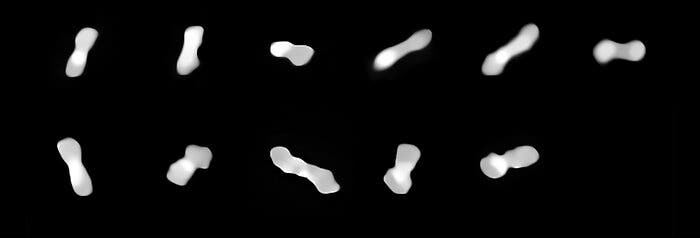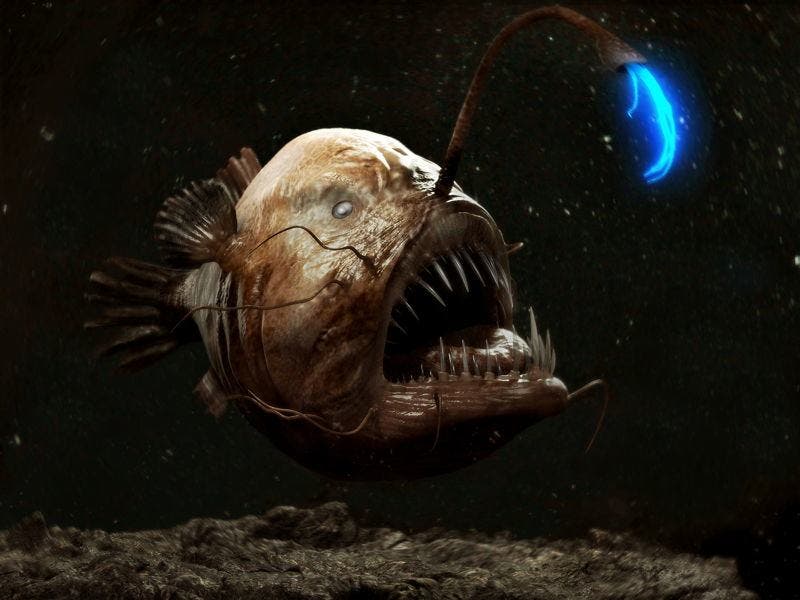
A team of astronomers has seemingly obtained the best pictures and data to date of the peculiar asteroid, Kleopatra. Using the European Southern Observatory’s Very Large Telescope (VLT), observers from the SETI Institute in Mountain View, California, and the Laboratoire d’Astrophysique de Marseille, France, captured images to help two teams of scientists answer some interesting questions.
“Kleopatra is truly a unique body in our Solar System,” says Franck Marchis, who led a study on the asteroid published in Astronomy & Astrophysics. “Science makes a lot of progress thanks to the study of weird outliers. I think Kleopatra is one of those and understanding this complex, multiple asteroid system can help us learn more about our Solar System.”
The asteroid, which orbits in the central region of the asteroid belt between Mars and Jupiter, was initially discovered on April 10, 1880. However, it wasn’t until just 20 years ago that radar observations revealed it had two lobes which were connected by a thick “neck.” In 2008, Marchis and his colleagues discovered that the asteroid was orbited by two moons, named AlexHelios and CleoSelene, after the Egyptian queen’s children.
Using the telescope’s Spectro-Polarimetric High-contrast Exoplanet Research (SPHERE) to obtain several images from 2017-2019, Marchis’s team determined the celestial body to be 168 miles (270 kilometers) across. That is nearly half the length of the English Channel. The VLT allowed them to produce a 3D rendering of the dog-bone-shaped body where they found one end of the dog-bone shape to be larger than the other.

Astronomers were also resolved to find the answer to another curious question. What was up with Kleopatra’s moons? A second study, also published in Astronomy & Astrophysics, used SPHERE observations to find the correct orbits of the moons. Previous studies had estimated their trajectories, however, these new readings surprised the team a bit, showing that the satellites were not where they were previously thought to be. The new data revealed that the positions of the moons’ orbits were actually 35% lower than they formerly thought.
“This had to be resolved,” said Miroslav Broz of Charles University in Prague, Czech Republic, who led the study. “Because if the moons’ orbits were wrong, everything was wrong, including the mass of Kleopatra.”
Combining the new estimates for volume and mass, the astronomers were able to estimate a new value for the density of Kleopatra. This also ended up being different than expected, when results concluded that the asteroid was less than half the density of iron. The low density, which is believed to have a metallic composition, suggests that the asteroid has a porous structure and could be little more than a “pile of rubble.” These conclusions mean it likely formed when material reaccumulated following a giant impact.
This rubble-pile structure – along with the way it rotates — gives indications as to how its two moons could have developed. The Kelopatra asteroid rotates almost at a critical momentum, the speed above which it would start to fall apart, and even small impacts may kick pebbles off its surface. Marchis and his team believe that those pebbles could subsequently have formed AlexHelios and CleoSelene, meaning that Kleopatra has truly birthed its own moons.
The upcoming (and originally named) Extremely Large Telescope (ELT) promises to hold more surprises for the researchers.
“I can’t wait to point the ELT at Kleopatra, to see if there are more moons and refine their orbits to detect small changes,” exclaimed Marchis.






